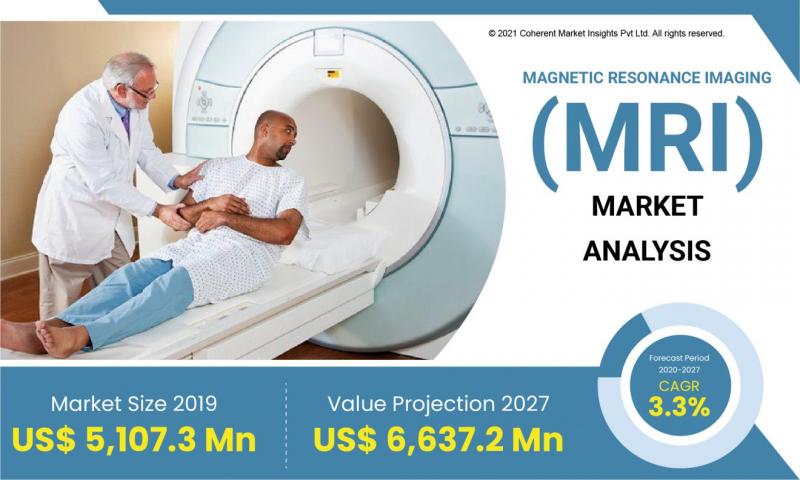Magnetic Resonance Imaging (MRI) has revolutionized the field of medical diagnostics, providing a non-invasive and highly detailed view of the human body's internal structures. As technology continues to advance, the MRI systems market has experienced significant growth and innovation. In this blog, we'll delve into the world of MRI systems, examining their importance, recent developments, and market trends.
The Significance of MRI Systems
MRI is a crucial tool in modern medicine, offering unparalleled insights into various medical conditions. Unlike X-rays or CT scans, which use ionizing radiation, MRI relies on strong magnetic fields and radio waves to create detailed images. This makes MRI safer for patients and particularly useful in imaging soft tissues, such as the brain, muscles, and organs.
Applications of MRI are vast and include diagnosing neurological disorders, detecting tumors, assessing musculoskeletal injuries, and evaluating cardiovascular health. Its ability to capture dynamic processes, such as blood flow, has further expanded its utility in diagnosing and monitoring diseases.
Market Overview
The MRI systems market has seen substantial growth over the years, driven by technological advancements, rising healthcare needs, and increasing awareness of the benefits of MRI. The market encompasses a range of systems, from traditional closed-bore MRI machines to open and upright designs catering to diverse patient requirements.
Key Market Trends
- High-Field MRI Dominance: High-field MRI systems, offering superior image quality, have been the dominant choice in clinical settings. These systems are essential for precise diagnosis and research purposes.
- Expanding Clinical Applications: The versatility of MRI has led to its application in emerging areas such as functional MRI (fMRI) for neuroscience research, MR angiography (MRA) for vascular imaging, and cardiac MRI for heart assessments.
- Growing Demand for Open MRI: Open MRI systems, which provide a more comfortable experience for claustrophobic or larger patients, have gained popularity. This trend reflects the emphasis on patient comfort and accessibility.
- AI Integration: Artificial Intelligence (AI) is making inroads into MRI, enhancing image quality, and aiding in automated disease detection. AI algorithms are being developed to reduce scan times and improve diagnostic accuracy.
- Hybrid Imaging: The integration of MRI with other imaging modalities like positron emission tomography (PET) or single-photon emission computed tomography (SPECT) is advancing hybrid imaging, enabling better disease characterization.
- Portable and Compact MRI: Innovations in portable and compact MRI systems are expanding MRI accessibility beyond traditional clinical settings, including remote and underserved areas.
Market Challenges
While the MRI systems market continues to flourish, it faces some challenges:
- Cost: High initial capital costs and ongoing maintenance expenses limit the adoption of MRI technology in some regions and healthcare facilities.
- Access: In rural or underdeveloped areas, access to MRI services remains limited, hindering early diagnosis and timely treatment.
- Technician Shortage: The shortage of skilled MRI technicians can impact the availability and quality of MRI services.
Conclusion
The Magnetic Resonance Imaging (MRI) systems market is on an upward trajectory, driven by technological advancements and its indispensable role in healthcare. As the demand for safer and more accurate diagnostic tools grows, MRI will continue to evolve, making healthcare more accessible and effective for patients worldwide.
Stay tuned for future developments in MRI technology, as innovation continues to shape the landscape of medical imaging and diagnostics.
Read More….
Bacterial Conjunctivitis Drug Market
Myelofibrosis Treatment Market
